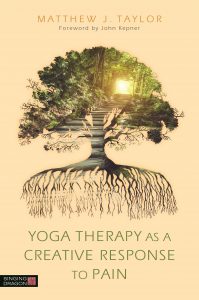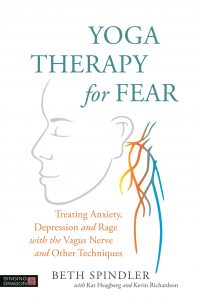
Matthew J. Taylor, PT, PhD, C-IAYT is a yoga safety expert, advisor to and past president of the International Association of Yoga Therapists, Accessible Yoga board member, and a yoga policy consultant. He directs SmartSafeYoga.com and authored the book Yoga Therapy as a Creative Response to Pain (Singing Dragon, 2018), as well as over 40 other publications.
In this video, Matt provides some practical information and tips on keeping yoga teaching simple and efficient, while remaining inclusive towards all students.
Yoga Therapy as a Creative Response to Pain
Matthew J. Taylor. Foreword by John Kepner
A guide that supports yoga therapists in creating a programme of care for those living with chronic pain, through bringing pain science, creativity and yoga together for the first time. It provides the skills and knowledge to create an environment that restores hope and meaning as well as practical guidance. Read more













 Simply put: yes. Yes, there is a need for increased training in the world of yoga, because the focus of yoga that has become the most popular is asana, and asana deals with movements of the human body. And the human body is one complicated and mysterious machine — which is surprisingly easy to break. Now, this doesn’t mean a person can’t teach a good and safe yoga class without further education in related fields, but in order to advance the benefits of yoga by bringing it to a larger population of the world, it would be helpful if the concept of yoga evolved into a more respected and scientific field.
Simply put: yes. Yes, there is a need for increased training in the world of yoga, because the focus of yoga that has become the most popular is asana, and asana deals with movements of the human body. And the human body is one complicated and mysterious machine — which is surprisingly easy to break. Now, this doesn’t mean a person can’t teach a good and safe yoga class without further education in related fields, but in order to advance the benefits of yoga by bringing it to a larger population of the world, it would be helpful if the concept of yoga evolved into a more respected and scientific field. Beth has over four decades’ experience in utilizing yoga as a healing modality, plus the highest certification in the field. Her book,
Beth has over four decades’ experience in utilizing yoga as a healing modality, plus the highest certification in the field. Her book, 